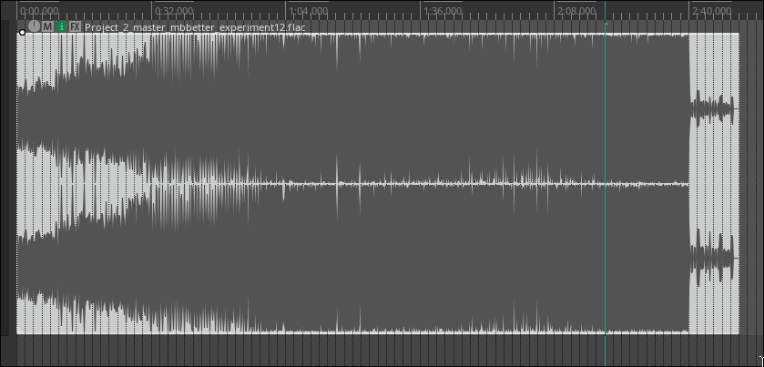I feel like I've just discovered theory of relativity, but at the same time it's so obvious that I'm shocked I couldn't figure it out sooner.
You see, the way I like to make music is so that the full mix peaks (almost) constantly, and so the waveform looks roughly like this:

The reason I love this approach is because it adds some sort of nice flair and texture to the mix, making it sound very interesting, but there's an obvious problem with this approach: it's very loud and most dynamics are lost.
But for the most part, I just didn't care about the loss of dynamics, because I thought to myself "this is my style", and I couldn't figure out why other people didn't like my mixing.
Most people said they were too loud, "But what's the problem just lowering the volume?", I kept thinking to myself. "Surely it's not that difficult to just adjust to the loudness of the mix, right?", I wondered.
And so I stopped caring about this at all, citing that it's all "just my style" any time somebody asked about the mix.
Some time has passed, I made songs adhering to that notion, and one day I experimented with the volume. I tried lowering the volume for every instrument, so that the mix doesn't peak constantly, but the JUICES and the TEXTURE were all gone all of a sudden. I searched a lot of places for information on why this happens, and in the end I found the answer!
Why did my mixes sound better when they were peaking (and then being soft clipped)? Well, because they were distorting due to the peaking!
Yes, in hindsight it is quite obvious that this is what was going on, but don't blame me, I'm just an engineer!
So, what could I do to get the juices and the texture of peaking back, but without making my mixes overly loud? Well, I could make each track peak, render them separately and then in the mixing just lower their volume, but the juice will still be lost due to the peaking artifacts being rather quiet, actually!
So, what's the solution then? Just adding distortion with a pedal? That would work, but having control over the distortion would help tremendously and there aren't many distortion pedals with multi-band controls for distortion levels and such.
You've probably already guessed it, but the solution is actually just using a saturation plugin.
And now, every mix can be as quiet as it needs to be, while still having the nice texture that I'm after. There's also an added bonus: now each mix can have its own texture that I have total control over, instead of relying on digital clipping to add it and praying that it's the one that I want.
And now, our mix looks like this:

And you might be confused, because it seems quite similar to the other one!

Well, that is true, they are quite similar. However, there are some differences.
For one: this new one has much better clarity on each instrument, but the average waveform is thinner (minus the peaking on the kicks and snares which is intentional, akin to daft punk mixes).

So, not only did the mix not lose the texture that I love, it also improved on the clarity!
And here comes a new revelation for me: there's no need for so much instruments anymore! You see, previously I would make my songs have a ton of instruments, with most playing the same thing at the same time (a.k.a. layering).
The reason I was doing that is because the mix would sound more "full" if there was a lot of layering, but you can just use a saturator and it effectively does the same thing and much better, too!
You see, by having a lot of different instruments with different tones playing the same notes, we end up with a very complicated instrument with a huge footprint in the mix, which adds a lot of harmonics! But the caveat is that this instrument usually sounds very muddy, since all of the layers might clash with each other due to a NUMBER OF FACTORS.
Now, having a few instruments play the same thing is still a good idea! But if you use a saturator, you won't have to layer 5-10 of them anymore!
Thanks to saturation I've managed to make my new mixes sound AND LOOK absolutely wonderful, compared to my old ones!

Saturation is overpowered and it shouldn't ever be neglected.
I hope this read was interesting, despite the stuff I mentioned being probably obvious to people who have been doing music for some time :)